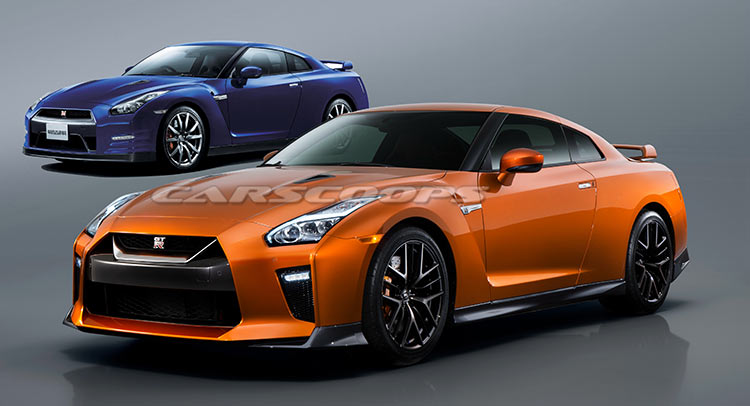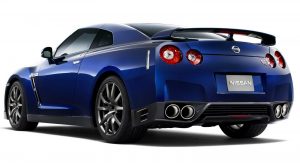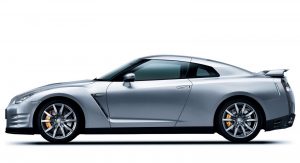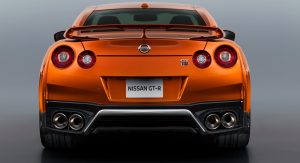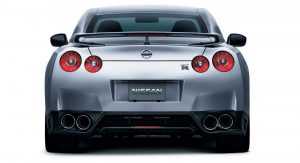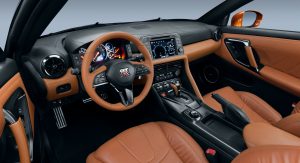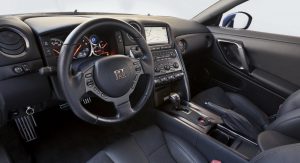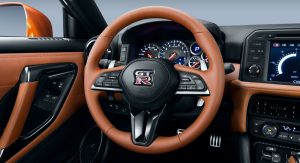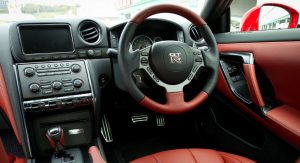Over the course of its current 9-year lifespan, the Nissan GT-R has matured into an even more all-rounded machine, adopting a chiseled, no nonsense style in its pursuit to offer outstanding, bang for buck performance.
The latest update for the GT-R comes both in visual and mechanical form, and although its upgraded 565 HP 3.8-litre V6 VR38DETT and blistering performance are subjects worth debating, we’re going to concentrate (for now) on its new design elements.
It’s almost like Nissan finally realized that lap times aren’t everything, but don’t think for a moment this new (and improved) model lost its ability to reason and even tame the track. It still remains a very capable machine, engineered not only to be a thorn in its competition’s side, but to be better than the outgoing version.
But back to the matter at hand, Nissan has subtly (yet efficiently) revised the vehicle’s design in order to maintain it fresh and crisp for the time it has left in production. That said, the GT-R’s fascia has been remodeled, now sporting a wider main air intake – with updated mesh pattern, and without the flanking vents used for brake cooling – as well as a new, signature V-Motion grille resting below the badge. These changes align to the Japanese car manufacturer’s current design language, but they’re also reminiscent of the 2020 Vision GT concept, although you’ll have to squint really hard to see the resemblance.
Still, the similarities are there, especially when you look at the two new air intakes, embedding the LED daytime running clusters, implemented under the headlights. The hood’s pronounced character lines, flowing from the grille to the base of the windshield, are a giveaway as well, while the aggressive lip improves the automobile’s aerodynamics and aggressiveness.
Nothing unusual is going on at the car’s rear, though, it does come with a slightly revised bumper and a bigger diffuser housing the quad tailpipes. And don’t expect any significant changes on the sides either, but eagle-eyed aficionados will instantly notice the new skirts.
Step into the cabin and you’re greeted by a new atmosphere. The entire dashboard has been redesigned in order to reduce the model’s button count, making it appear more modern and simpler in the process.
In fact, if you were accustomed to the old GT-R’s layout this one might even baffle you. The previous variant’s clumsy and awkwardly positioned air vents were scrapped and replaced with two big units (one on each side of the dash), and a rectangular cluster on the center console, beneath the new LCD display, forcing the commands for the climate control and radio to relocate.
The automatic shifter lever has also been moved to a higher position, while the new three spoke steering wheel gathers all the buttons in a compact clump.
Needless to say, Nissan refined the latest iteration of the R35 GT-R series, appealing for those looking not only for a capable track car, but a veritable grand tourer also. It might annoy purists, but rest assured we’re talking about the same GT-R that performs mind-bendingly on the track.



